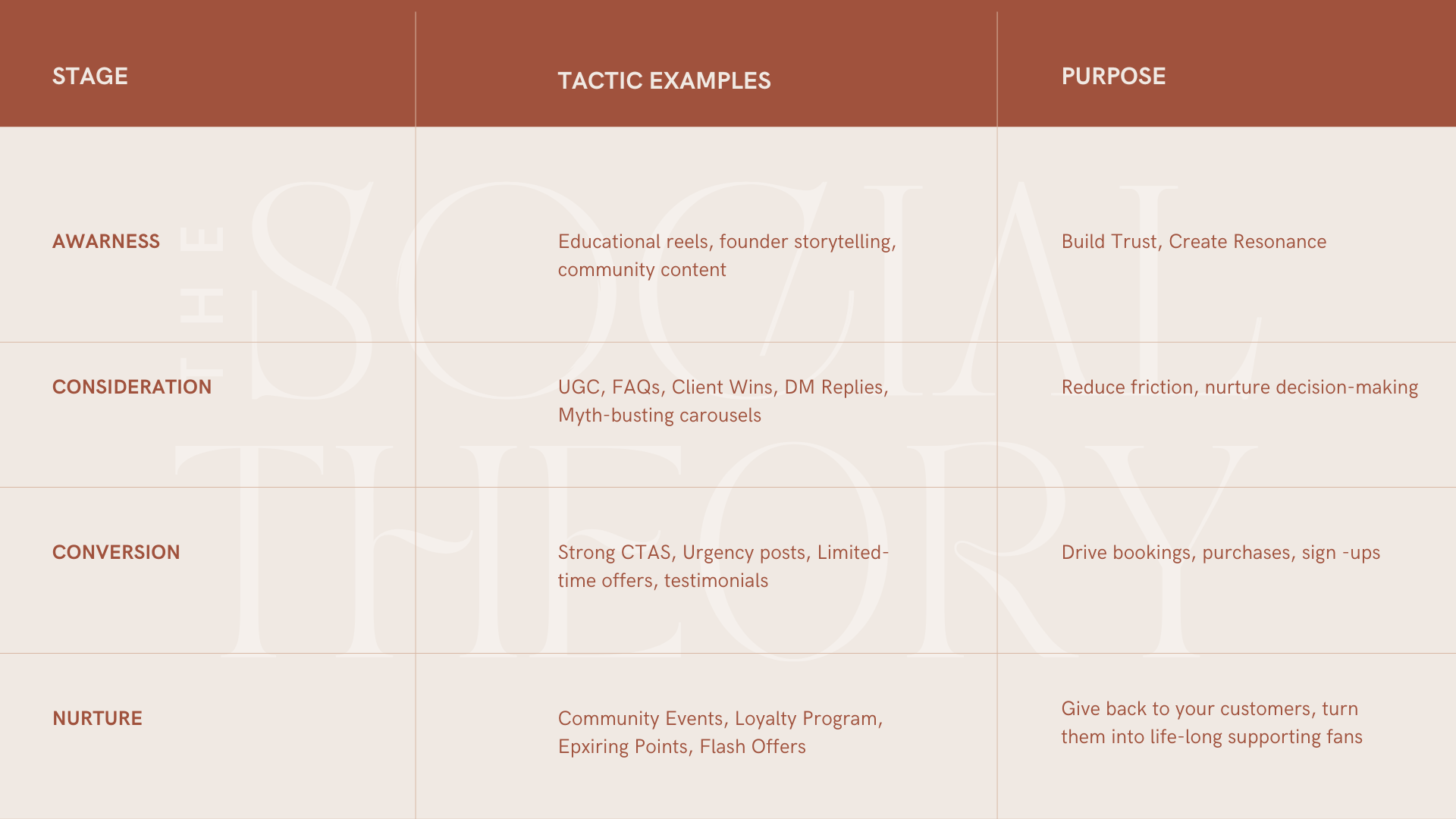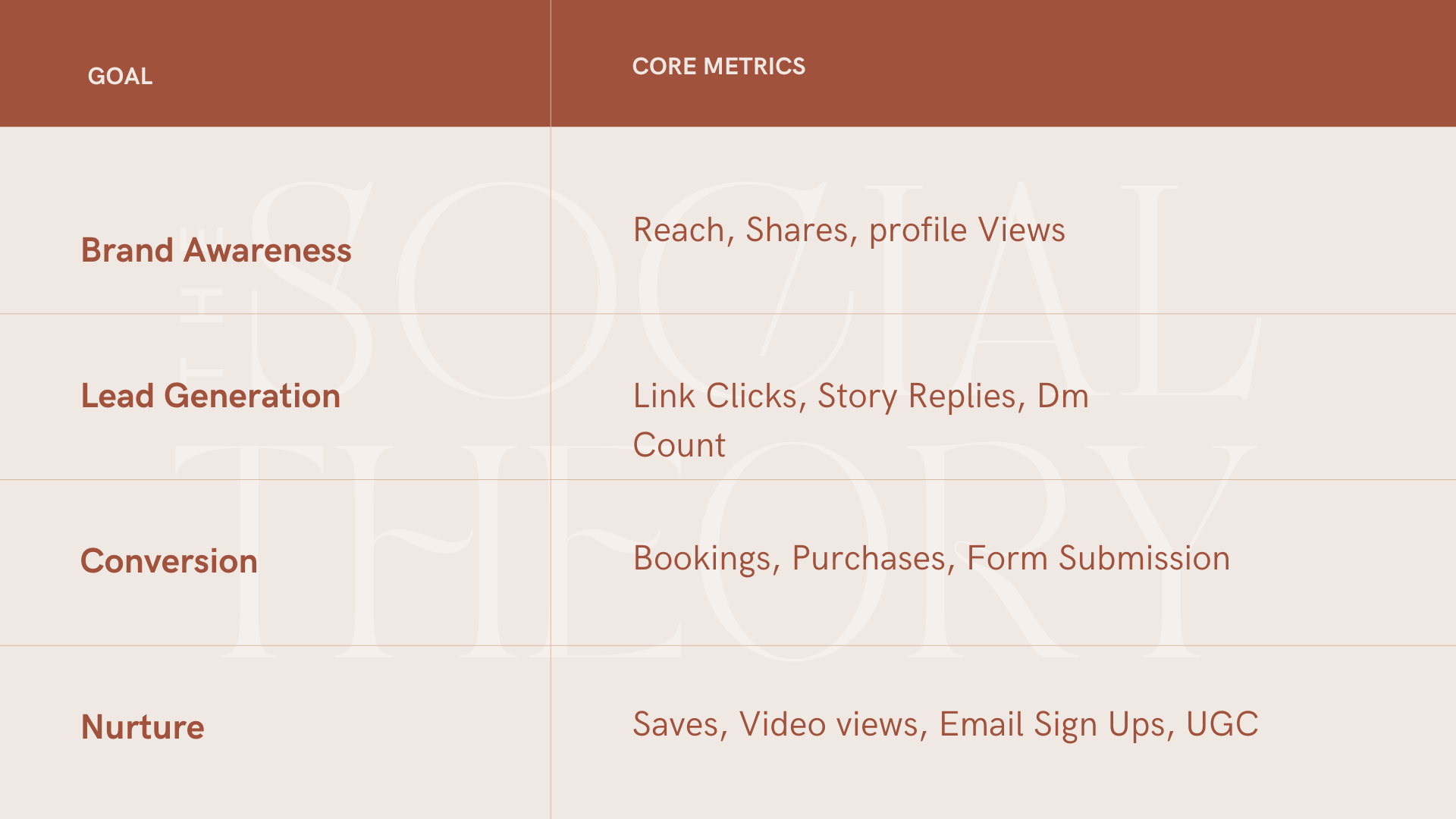How to create a social media content strategy
For the heart-led founder scrambling to be seen online: A Content Strategy That’s Sustainable, Strategic, and Doesn’t Feel Like Selling Your Soul
You didn’t start your business to become a content creator.
You started it to help people.
To do meaningful work.
To create something of value, on your own terms.
Now you’re juggling Canva templates, reels, captions, trending audios, algorithms, and that vague pressure that you’re “meant to be showing up more” …
while also trying to run the actual business.
And the worst part?
You’re doing so much — and still wondering:
“Why isn’t this working?”
“Why am I spending all this time posting and not getting anything back?”
If you’re feeling stretched, second-guessing every post, or wondering if the only way to grow is to turn into an influencer — breathe.
You’re not the problem. ( maybe..)
The problem is you’ve been trying to “do content” without a strategy.
Not just any strategy, but one that’s aligned with your values.
One that’s built around how you like to show up.
One that understands your content creator archetype.
Because not everyone thrives in front of the camera, and it shows.
Some people come alive in educational carousels. Others in humour. Some in poetry. Some in raw honesty.
And others? Just want to share their work and get back to doing what they love.
Stop trying to copy what’s working for everyone else.
Let’s figure out who the f*ck you are, and build a strategy that feels good, because it actually is.
In this blog, you’ll learn the exact process we use to create content strategies that:
Reflect your business goals
Support your actual lifestyle and energy
Create long-term momentum (not just short-term visibility)
We’ll guide you through:
How to set one clear monthly marketing goal
How to build a campaign around that goal
What kind of content to post for each phase of the buyer journey
How to choose metrics that actually matter
How to test content before you spend a cent on ads
What Is a Social Media Content Strategy?
A social media content strategy is more than a content calendar. It’s the full blueprint for how your brand shows up online with purpose.
It connects the dots between what you’re trying to achieve, who you’re speaking to, and how you move them from stranger → supporter → customer.
Your strategy gives you direction when you feel scattered. It creates cohesion when you're bouncing between content types and formats. It helps you stop reacting to trends and start creating content with a clear throughline.
It’s not about more content. It’s about meaningful content that works together.
When your strategy is mapped clearly, you know:
What your monthly focus is
What content pillars you’re building from
What stage of the customer journey you’re speaking to
What metrics you’re measuring success by
The best part? It removes the overthinking. No more “Should I post this?” because you already know what you’re working towards.
How to Set One Clear Monthly Goal (And Build a Campaign That Converts)
Most business owners say their goal is to “grow” …. but growth only happens with structure.
At The Social Theory, we help our clients define one overarching goal per month (or per quarter, depending on their size and campaign scope). Why? Because clarity creates results, and fragmented focus kills momentum.
Step 1: Start with the End Game, Then Work Backwards
Your monthly goals should ladder up to your annual business goals.
If your goal is $250K in annual revenue and your average customer is worth $2.5K, you know you need 100 paying customers across the year. Now we can build backwards: → How many do you need this quarter?
→ What can marketing do to drive awareness, interest and action in that timeframe?
We use this to help you break goals down into clear, achievable monthly campaigns — matched to your budget and business model.
For agile businesses, this often means responsive monthly digital campaigns. For corporate teams with more layers of approval? Quarterly campaigns aligned to seasonal offers, events, or print activations might make more sense.
Step 2: Choose One Clear Goal per Campaign
Here’s the truth: if you try to do everything at once, you’ll do nothing well.
We guide our clients to focus on one clear marketing goal per campaign cycle. Some common examples:
Grow local brand awareness
Drive 20 new leads to your sales team
Sell out your upcoming workshop
Increase traffic to your new service page
Then we ask:
“What is that goal worth to your business?”
Because the budget, effort, and metrics you assign to it should reflect the value of the outcome.
Build a Campaign Around the Buyer Journey
This is where it gets fun.
Once the goal is clear, time to build a campaign that moves your audience through the buyer journey, from awareness to interest, consideration to conversion.
Using your brand pillars, map content and tactics across each stage. Weaving in psychological triggers (like FOMO, social proof, and exclusivity) strategically, without ever being pushy.
Content Strategy Examples Across The Buyer Journey - Created by The Social theory
Step 4: Choose Metrics That Actually Matter
A lot of small businesses obsess over the wrong things: followers, likes, reach.
Yes, those metrics tell you something. But they’re not the whole story.
We track based on goal alignment, not vanity:
If you’re a small business with a limited budget — don’t chase more.
Chase better.
You don’t need 10,000 followers. You need 10 customers who are ready to buy.
Step 5: Organic First, Paid Second
We always recommend this sequence: Test content organically → Gather real data → Then boost what worked.
That way, you know what actually resonates before throwing money at it.
And trust us, it’s not always the most obvious post that performs best.
Organic is your insight engine. Paid is your amplifier.
By the time you promote something, you’re not guessing. You’re backing a proven performer.


